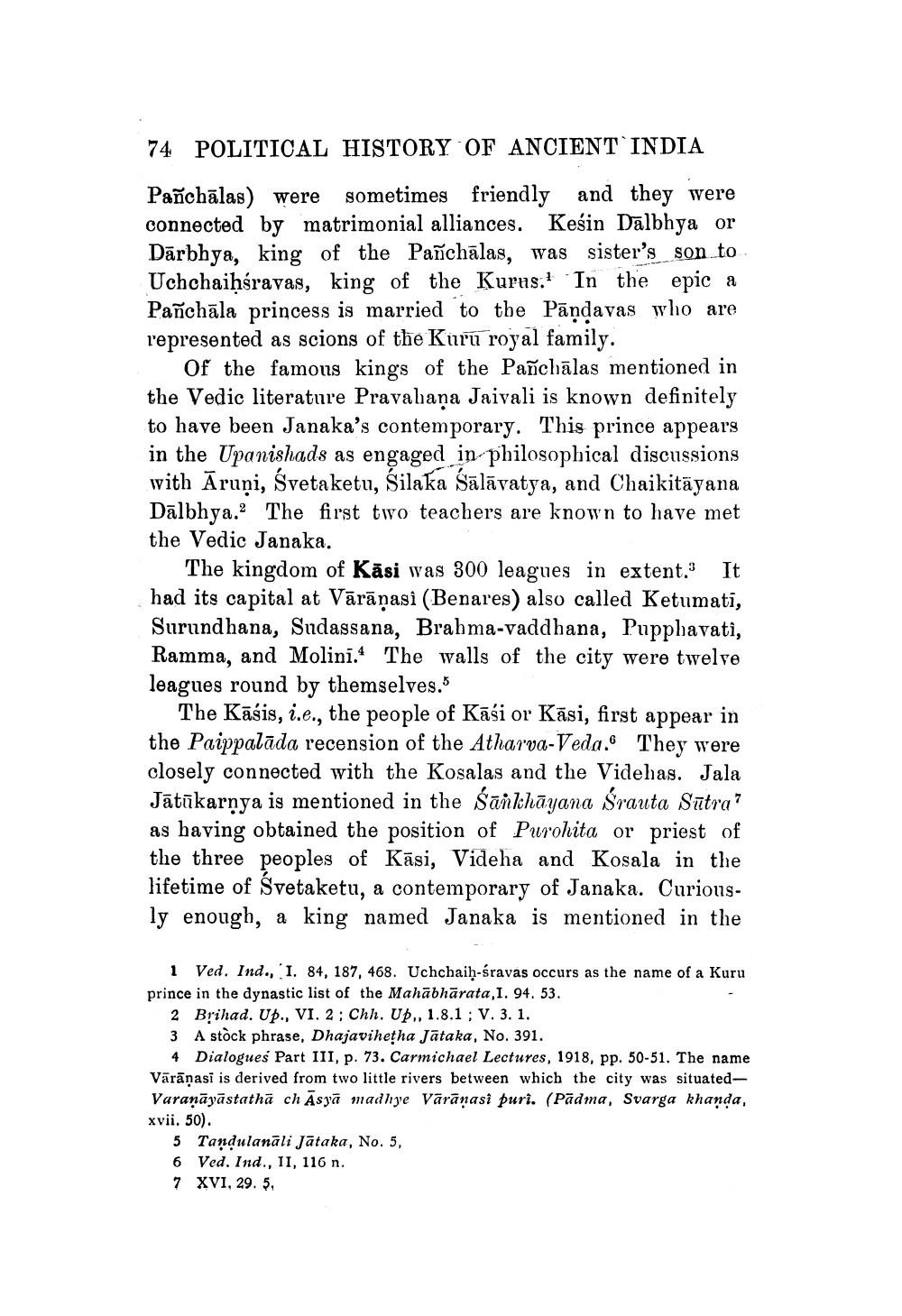________________
74 POLITICAL HISTORY OF ANCIENT INDIA
Pañchalas) were sometimes friendly and they were connected by matrimonial alliances. Keśin Dalbhya or Darbhya, king of the Pañchalas, was sister's son to Uchchaiḥśravas, king of the Kurus. In the epic a Panchala princess is married to the Pandavas who are represented as scions of the Kuru royal family.
Of the famous kings of the Panchalas mentioned in the Vedic literature Pravahana Jaivali is known definitely to have been Janaka's contemporary. This prince appears in the Upanishads as engaged in philosophical discussions with Aruni, Svetaketu, Silaka Salavatya, and Chaikitāyana Dalbhya. The first two teachers are known to have met the Vedic Janaka.
The kingdom of Kasi was 300 leagues in extent.3 It had its capital at Vārāṇasi (Benares) also called Ketumati, Surundhana, Sudassana, Brahma-vaddhana, Pupphavati, Ramma, and Molini. The walls of the city were twelve leagues round by themselves."
The Kasis, i.e., the people of Kasi or Kasi, first appear in the Paippalada recension of the Atharva-Veda. They were closely connected with the Kosalas and the Videhas. Jala Jātākarṇya is mentioned in the Sankhayana Śrauta Sūtra as having obtained the position of Purohita or priest of the three peoples of Kasi, Videha and Kosala in the lifetime of Svetaketu, a contemporary of Janaka. Curiously enough, a king named Janaka is mentioned in the
1 Ved. Ind., I. 84, 187, 468. Uchchaiḥ-śravas occurs as the name of a Kuru prince in the dynastic list of the Mahabharata, I. 94. 53.
2 Brihad. Up., VI. 2; Chh. Up,, 1.8.1; V. 3. 1.
3
A stock phrase, Dhajavihetha Jataka, No. 391.
4
Dialogues Part III, p. 73. Carmichael Lectures, 1918, pp. 50-51. The name Vārāṇasi is derived from two little rivers between which the city was situatedVaraṇāyāstatha ch Asya madhye Varanasi puri. (Padma, Svarga khanda, xvii. 50).
5 Tandulanali Jātaka, No. 5,
6
Ved. Ind., II, 116 n.
7 XVI, 29. 5.




